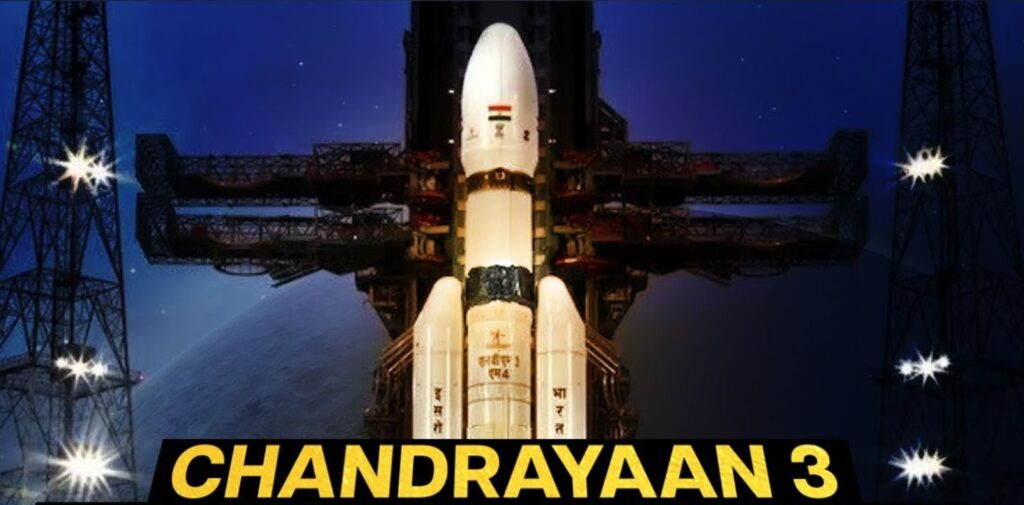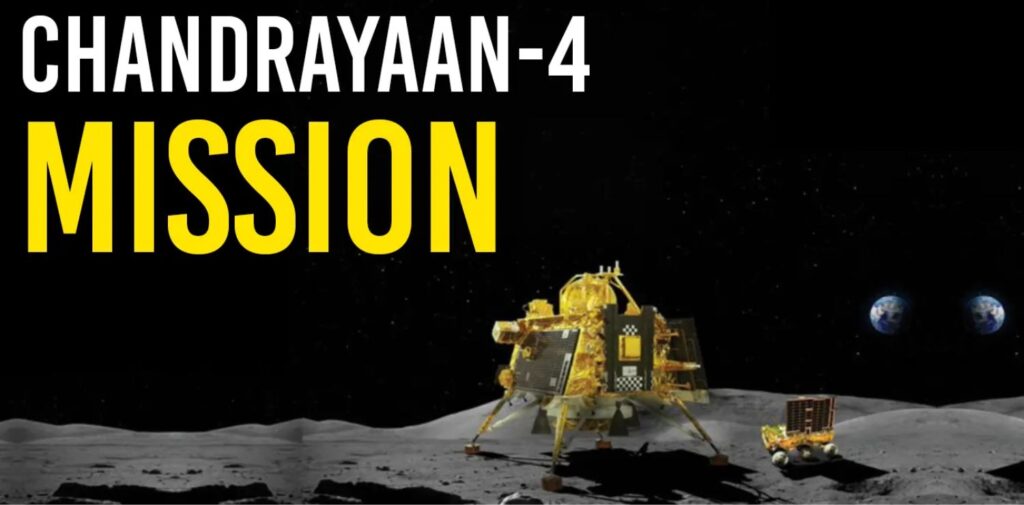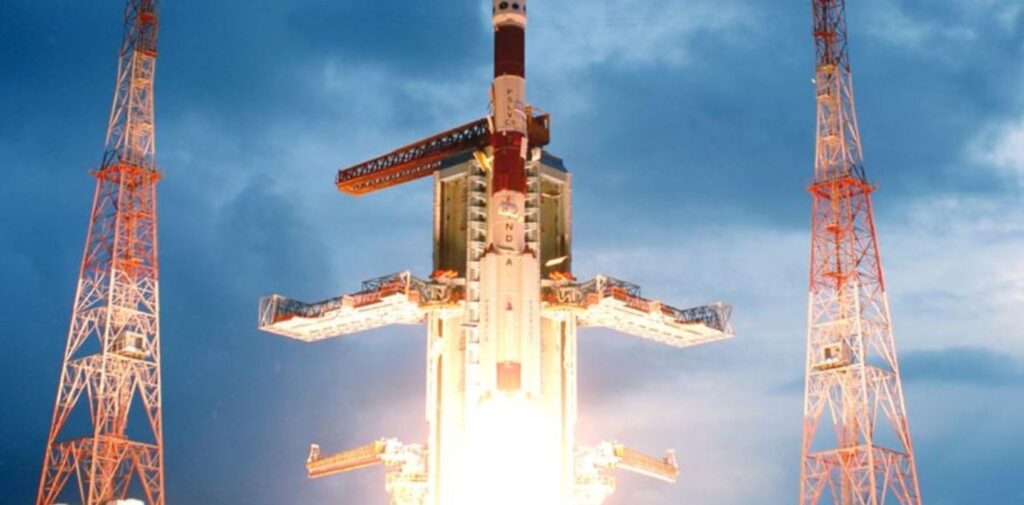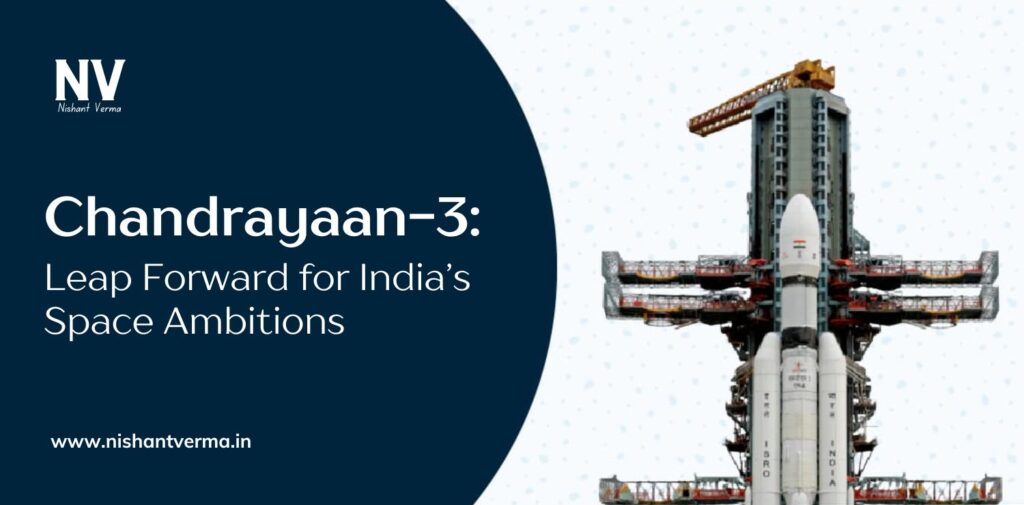India’s space journey has been nothing short of inspiring. With every mission, the Indian Space Research Organisation (ISRO) has proven its mettle on the global stage, from launching satellites to exploring distant celestial bodies. The Chandrayaan mission series marks a significant chapter in this journey, with Chandrayaan-3 and Chandrayaan-4 pushing the boundaries of India’s lunar exploration efforts.
With the successful landing of Chandrayaan-3’s lander and rover on the Moon, India once again etched its name into the annals of space history. Now, the country sets its eyes on an even more ambitious project – Chandrayaan-4, which aims to land on the Moon, collect lunar samples, and return them to Earth. This mission is expected to cost an estimated ₹2,104.06 crore and has been approved by the Indian government for a launch in 2027.
Chandrayaan-3: The Foundation of India’s Lunar Exploration
The Chandrayaan missions are not new for ISRO. In 2008, Chandrayaan-1 marked India’s first successful venture to the Moon, helping to confirm the presence of water molecules on the lunar surface. Following this, Chandrayaan-2 in 2019 attempted a soft landing on the Moon but was unsuccessful in its final stages. However, the orbiter of Chandrayaan-2 continues to operate, sending valuable data back to Earth.

Chandrayaan-3, which landed its rover and lander on the Moon’s surface, represents ISRO’s persistence and resilience. Learning from the shortcomings of Chandrayaan-2, Chandrayaan-3 focused primarily on landing safely. With a redesigned lander, Vikram, and a rover, Pragyan, ISRO ensured that all critical systems were thoroughly tested and refined. The mission’s success in achieving a soft landing on the lunar surface makes India the fourth country to do so after the USA, Russia, and China. Chandrayaan-3 aimed to study the Moon’s south pole, an area believed to hold vast amounts of water ice, and provided crucial information for future lunar exploration missions.
The achievements of Chandrayaan-3 pave the way for India to move forward with even bolder plans. It serves as the perfect foundation for Chandrayaan-4, which will not just focus on exploration but aims to collect and return lunar samples to Earth—a feat accomplished by only a few space agencies to date.
Chandrayaan-4: A Game-Changer in Lunar Exploration
Scheduled for launch in 2027, Chandrayaan-4 aims to mark a new era in India’s space exploration history. While Chandrayaan-3 succeeded in landing and conducting research on the Moon, Chandrayaan-4 will go a step further—bringing samples back to Earth. This mission will consist of a lander and rover, much like its predecessor, but will also include an ascent module and a return module, allowing collected lunar material to be transported back to Earth.

The primary scientific objective of Chandrayaan-4 is to study the composition and characteristics of the lunar soil. This will help scientists better understand the Moon’s geological history, including its volcanic activity, the distribution of materials like water ice, and its potential for supporting future manned missions. Bringing back lunar samples will also open up new possibilities for research in laboratories on Earth, allowing scientists to conduct detailed analyses that are impossible to do remotely.
The Cost and Strategic Importance
The estimated cost of Chandrayaan-4, ₹2,104.06 crore (approximately $255 million), might seem hefty, but in comparison to similar missions by other nations, it is quite modest. India has always prided itself on conducting space missions at a fraction of the cost that other countries invest. For instance, NASA’s Apollo missions, conducted during the 1960s and 1970s, cost billions of dollars in comparison.
The strategic importance of Chandrayaan-4 cannot be overstated. With global powers like the USA, China, and Russia increasingly focusing on the Moon for future space exploration, India’s continued involvement ensures that it remains an active player in this high-stakes arena. The Moon is viewed as a potential staging ground for further space exploration, including missions to Mars, asteroid mining, and even space tourism. Furthermore, with the discovery of water ice in the Moon’s south pole, the potential for establishing a lunar base for deep space exploration has gained traction.
Chandrayaan-4’s success could boost India’s standing in global space politics. If successful, ISRO would join an exclusive club of nations capable of returning lunar samples to Earth. This accomplishment would significantly enhance India’s credibility in international space cooperation efforts and could lead to potential partnerships with other space-faring nations.
Technological Challenges and Innovations
Missions of this magnitude are not without challenges. Chandrayaan-4’s success hinges on the precision of its lander and rover, as well as the effectiveness of the ascent and return modules. Returning samples from the Moon poses additional difficulties, including ensuring the safe ascent from the lunar surface and surviving the harsh conditions of space travel back to Earth.

To address these challenges, ISRO is developing several innovative technologies, including advanced propulsion systems, more robust landing mechanisms, and enhanced communication systems to ensure constant contact with Earth during the mission. The ascent module, which will carry the lunar samples back to the return module orbiting the Moon, is particularly critical. It must flawlessly dock with the return module, a process requiring extreme precision and coordination.
ISRO’s mission control team will also face new hurdles in managing this complex operation, as the Chandrayaan-4 mission involves multiple phases, including landing, sample collection, ascent, docking, and return to Earth. Each phase requires meticulous planning and perfect execution. However, ISRO’s successful management of previous complex missions, such as the Mars Orbiter Mission (Mangalyaan), proves that the organization is up to the task.
The Future of India’s Lunar Ambitions
Chandrayaan-4 is not just about national pride or scientific curiosity; it’s a critical step toward India’s larger space ambitions. The success of this mission could lead to future lunar exploration missions, potentially including manned landings. As space agencies worldwide eye the Moon for establishing permanent bases, India’s growing expertise in landing, exploring, and returning from the lunar surface puts it in a strong position to contribute to and lead international space missions.
Additionally, ISRO’s continuous progress showcases India’s potential to become a major player in the commercial space sector. With private companies like SpaceX and Blue Origin revolutionizing space travel, ISRO’s achievements in launching cost-effective missions position it as an attractive partner for both governmental and commercial space initiatives. Chandrayaan-4, therefore, has implications beyond national borders, opening up new avenues for collaboration and partnerships on the global stage.
Conclusion
The Chandrayaan-4 mission is a giant leap for India’s space program and a critical milestone in global lunar exploration efforts. With a cost-effective approach, the project promises not only scientific rewards but also immense strategic and political gains for India. By 2027, ISRO aims to accomplish what only a few nations have managed—returning lunar samples to Earth, thus contributing to humanity’s collective understanding of the Moon and its resources.
As ISRO continues to grow, the success of Chandrayaan-4 will further solidify India’s reputation as a space-faring nation capable of executing ambitious, high-impact missions. This mission, along with others in the pipeline, represents India’s long-term commitment to space exploration, ensuring that the country remains at the forefront of scientific discovery and technological innovation. The Indian cabinet’s approval of Chandrayaan-4 signifies that India is not just dreaming of the stars—it’s reaching for them, one mission at a time.




